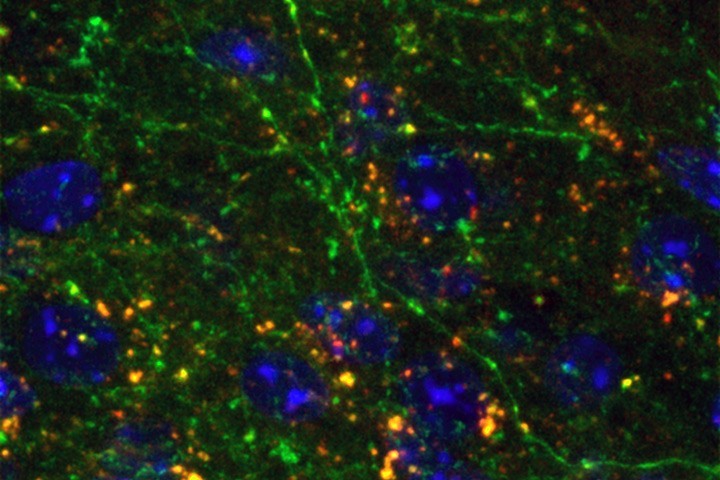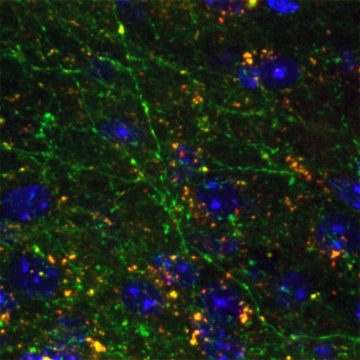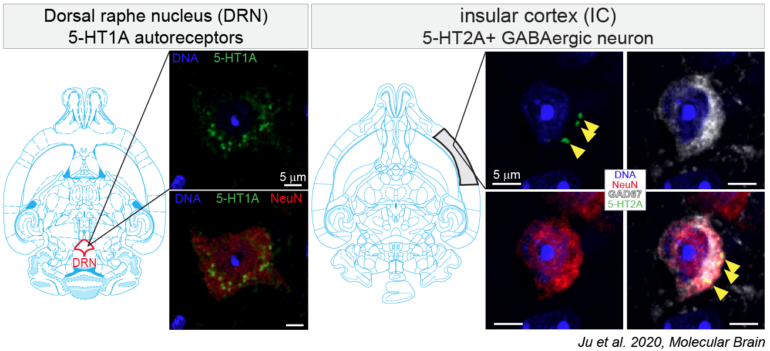
Anes Ju, Anna Beyeler et al in Mol Brain

Abstract
The serotonin (5-HT) system is the target of multiple anxiolytics, including Buspirone, which is a partial agonist of the serotonin 1A receptor (5-HT1A). Similarly, ligands of the serotonin 2A receptor (5-HT2A) were shown to alter anxiety level. The 5-HT1A and 2A receptors are widely expressed across the brain, but the target region(s) underlying the influence of those receptors on anxiety remain unknown. Interestingly, recent studies in human and non-human primates have shown that the 5-HT1A and 5-HT2A binding potentials within the insular cortex (insula) are correlated to anxiety. As an initial step to define the function of 5-HT transmission in the insula, we quantified the proportion of specific neuronal populations of the insula expressing 5-HT1A or 5-HT2A. We analyzed seven neural populations, including three defined by a molecular marker (putative glutamate, GABA or parvalbumin), and four defined by their projections to different downstream targets. First, we found that more than 70% of putative glutamatergic neurons, and only 30% of GABAergic neurons express the 5-HT1A. Second, within insular projection neurons, 5-HT1A is highly expressed (75-80%) in the populations targeting one sub-nuclei of the amygdala (central or basolateral), or targeting the rostral or caudal sections of the lateral hypothalamus (LH). Similarly, 70% of putative glutamatergic neurons and only 30% of insular GABAergic neurons contain 5-HT2A. Finally, the 5-HT2A is present in a majority of insula-amygdala and insula-LH projection neurons (73-82%). These observations suggest that most glutamatergic neurons can respond to 5-HT through 5-HT1A or 5-HT2A in the insula, and that 5-HT directly affects a limited number of GABAergic neurons. This study defines a molecular and neuroanatomical map of the 5-HT system within the insular cortex, providing ground knowledge to identify the potential role of serotonergic modulation of selective insular populations in anxiety.
Reference
Expression of serotonin 1A and 2A receptors in molecular- and projection-defined neurons of the mouse insular cortex
Anes Ju, Beatriz Fernandez-Arroyo, Yifan Wu, Débora Jacky, Anna Beyeler
Mol Brain. 2020-06-29; 13(1)
DOI: 10.1186/s13041-020-00605-5
The team
Neural circuits of anxiety (Team leader : Anna Beyeler)
Mise à jour: 08/07/20

